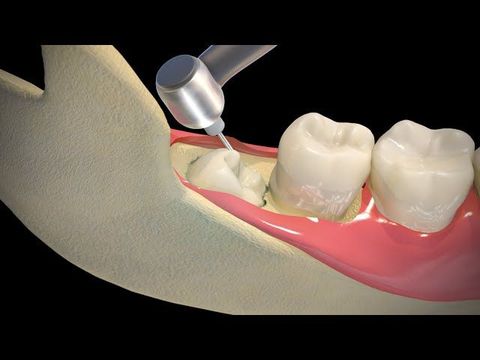Non-Surgical Skin Tightening Insights: Discover Methods, Key Information, and Step-by-Step Guidance
Non-surgical skin tightening refers to a group of techniques that use energy-based technologies to improve skin firmness without incisions or recovery time. These methods were developed to address common age-related changes such as reduced elasticity, mild sagging, and fine texture irregularities. As collagen and elastin decline naturally with age, people often look for approaches that support firmer-looking skin without going through invasive procedures.
Early devices focused mainly on radiofrequency energy, but modern techniques now include ultrasound, laser-based technologies, and combination systems. These advancements allow gradual tightening through targeted stimulation of deeper skin layers. Because these technologies work below the surface, they support the body’s natural structural components without physically removing or altering tissue.
Non-surgical approaches exist to provide simplified options for individuals looking for subtle improvements. They continue to evolve as energy-based devices become more precise, offering controlled heating, better temperature regulation, and more accurate targeting of tissue layers.
Importance
Non-surgical skin tightening matters today as more people prefer minimally invasive approaches for appearance enhancement. It is relevant for a wide range of adults who experience mild to moderate laxity due to aging, weight fluctuation, or environmental factors like sun exposure.
Its significance also connects to broader trends such as:
-
Growing interest in natural collagen support
-
Preference for low-downtime aesthetic methods
-
Greater availability of clinic-based technologies focused on firmness
These methods aim to address concerns such as loose jawline contours, under-eye laxity, neck creasing, and textural changes in areas like the abdomen or arms. They offer progressive improvements, providing an option for people who want gradual changes instead of rapid or invasive approaches.
For many individuals, non-surgical tightening helps support confidence and comfort in their appearance by addressing common age-related skin behavior.
Recent Updates
Recent developments in non-surgical skin tightening focus on improved precision, safety controls, and combination-based techniques. Over the past year, several notable trends and updates have appeared across global aesthetic technology discussions:
-
2024–2025 device updates
Many energy-based platforms introduced updated temperature-monitoring features to maintain consistent heat delivery. This helps optimize collagen stimulation while enhancing comfort. -
Expanded combination protocols (2024)
Clinics increasingly discuss combining radiofrequency with microneedling or ultrasound to create layering effects. These combinations are designed to address both surface texture and deeper firmness simultaneously. -
AI-assisted treatment mapping (late 2024 release)
Some new systems began integrating imaging tools and AI-supported mapping to guide practitioners in selecting optimal energy levels and coverage zones. -
Home-use device refinement (2024–2025)
Consumer-focused tools continue to improve, although they typically use much lower energy levels. Many manufacturers added features such as auto-shutoff, heat sensors, and better ergonomics. -
Shift toward collagen-monitoring biomarkers
Researchers in 2024 highlighted interest in tracking collagen remodeling through advanced imaging, allowing clearer before-and-after assessment of tightening progress.
Laws or Policies
Non-surgical skin tightening devices fall under regulatory standards that focus on safety, quality, and energy-based technology compliance. Regulations vary by country, but most require:
-
Medical device approvals from national regulatory bodies
-
Safety testing related to heat output, energy delivery, and electrical standards
-
Mandatory labeling about proper use and risk considerations
-
Guidelines for operator qualifications based on device category
In many regions, energy-based devices are classified as medical or aesthetic equipment, requiring oversight depending on intensity and intended use. Some countries regulate who may operate these systems, with distinctions between medical professionals and trained technicians.
Several policies also emphasize:
-
Skin protection standards
-
Device maintenance documentation
-
Transparent user guidance without exaggerated claims
These regulations help ensure that non-surgical tightening technologies are used responsibly and safely, providing users with clarity on what these devices are designed to accomplish.
Tools and Resources
A variety of tools, resources, and educational references can help individuals understand non-surgical skin tightening and track their progress.
Useful Tools
-
Skin analysis apps
Provide digital assessments of texture, firmness indicators, and hydration patterns. -
Collagen-tracking journals
Help individuals monitor improvements over multiple sessions. -
Temperature-controlled home devices
Offer low-intensity energy-based stimulation with built-in safety features.
Helpful Websites
-
Dermatology and skincare research platforms
-
Public health websites providing guidance on safe practices for cosmetic technologies
-
Academic resources explaining energy-based skin science
Templates and Guides
-
Pre-treatment planning sheets
-
Post-treatment tracking templates
-
Skin condition checklists
Below is an example table summarizing common energy-based methods and their general characteristics:
| Method | Common Energy Type | General Purpose | Typical Use Areas |
|---|---|---|---|
| Radiofrequency (RF) | Thermal energy | Supports collagen remodeling | Face, jawline, abdomen |
| Ultrasound | Focused acoustic energy | Targets deeper tissue layers | Chin, neck, cheeks |
| Laser-based tightening | Light energy | Surface and mid-layer support | Lower face, eyes |
| Combination systems | Multiple energy types | Multi-layer improvement | Face and body |
Another example table illustrating treatment goals:
| Goal | How Methods Support It |
|---|---|
| Improve firmness | Gradual collagen stimulation |
| Enhance contour definition | Targeted energy delivery |
| Smooth fine texture | Heat-induced remodeling |
| Support long-term elasticity | Repeated sessions encourage natural tightening |
FAQs
What areas can typically be targeted with non-surgical skin tightening?
Common areas include the face, jawline, neck, abdomen, arms, and above-knee regions. These methods usually focus on mild to moderate laxity rather than significant drooping.
How long does it take to notice improvement?
Most individuals notice gradual changes over several weeks. Because these methods rely on natural collagen processes, the timeline varies and tends to progress slowly and consistently.
Are the results permanent?
Results are not permanent, as the skin continues to age naturally. However, many people experience results that last several months to over a year depending on individual factors.
Is non-surgical skin tightening suitable for all skin types?
Most technologies are suitable for diverse skin types because they primarily target deeper structural layers rather than surface pigment. Still, individual evaluation is recommended.
Do energy-based methods work equally on all levels of laxity?
They are generally most effective for mild to moderate laxity. Severe sagging typically requires different types of interventions because non-invasive systems do not physically reposition tissue.
Conclusion
Non-surgical skin tightening continues to expand as a field focused on supporting the skin’s natural structure through controlled energy-based stimulation. It remains relevant because it offers a gradual and non-invasive approach to addressing common signs of aging such as laxity and reduced elasticity. With ongoing improvements in technology, better safety controls, and clearer regulatory guidance, individuals have more structured and transparent options available.
Understanding the methods, recent updates, policies, and tools helps people make informed decisions. As innovation progresses, non-surgical skin tightening is likely to become even more precise, offering refined support for firmness and overall skin behavior.
Disclaimer: The information provided in this article is for informational purposes only. We do not make any claims or guarantees regarding the accuracy, reliability, or completeness of the information presented. The content is not intended as professional advice and should not be relied upon as such. Readers are encouraged to conduct their own research and consult with appropriate professionals before making any decisions based on the information provided in this article.





